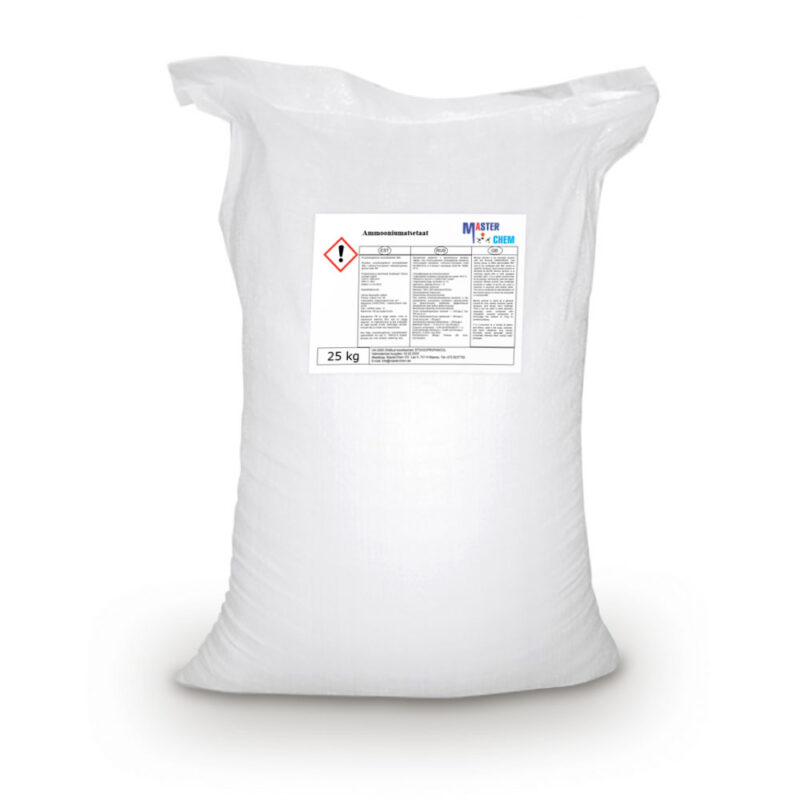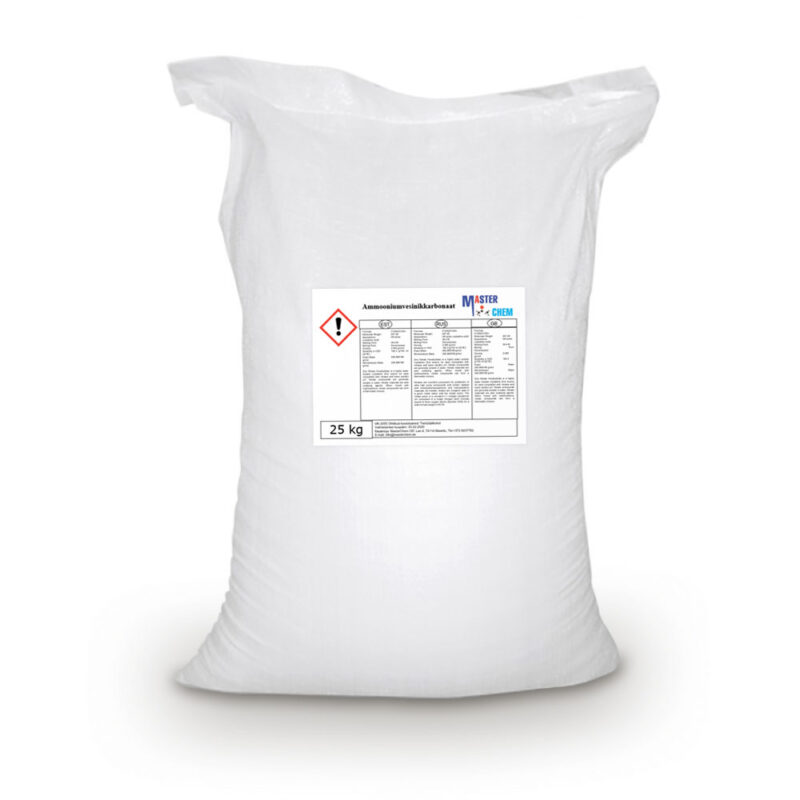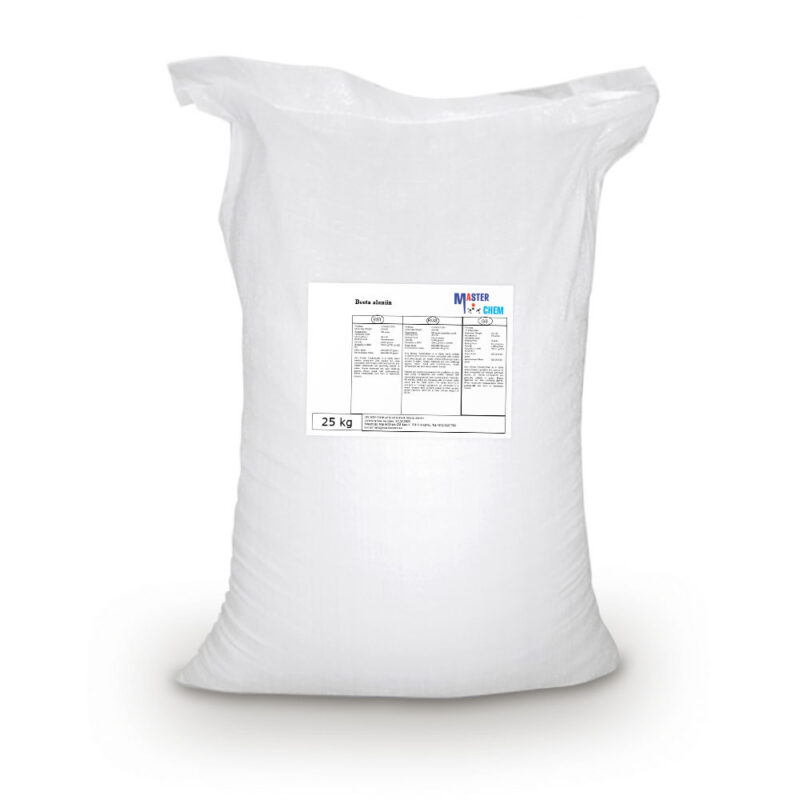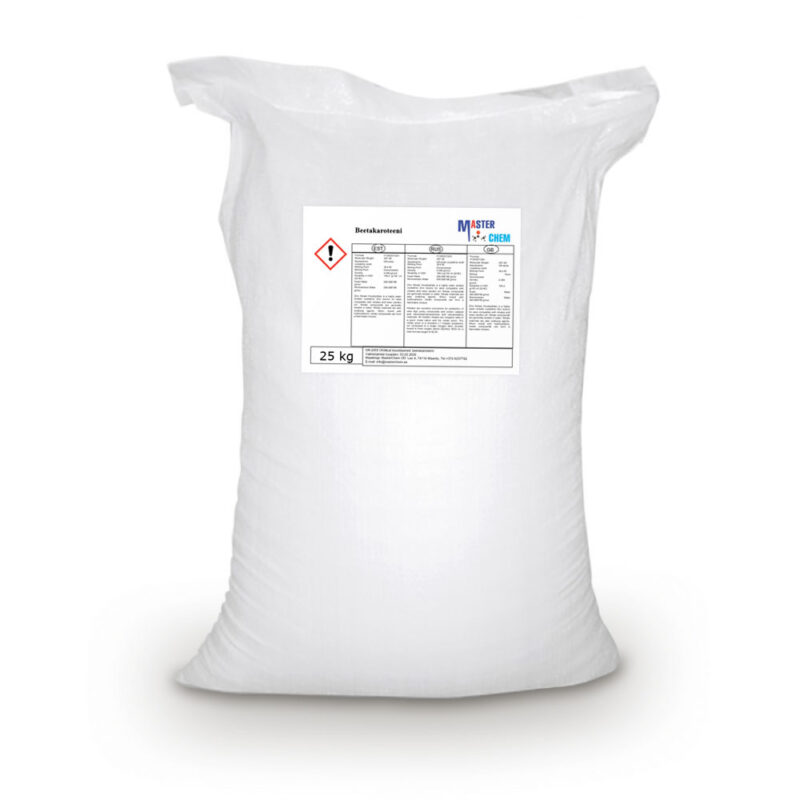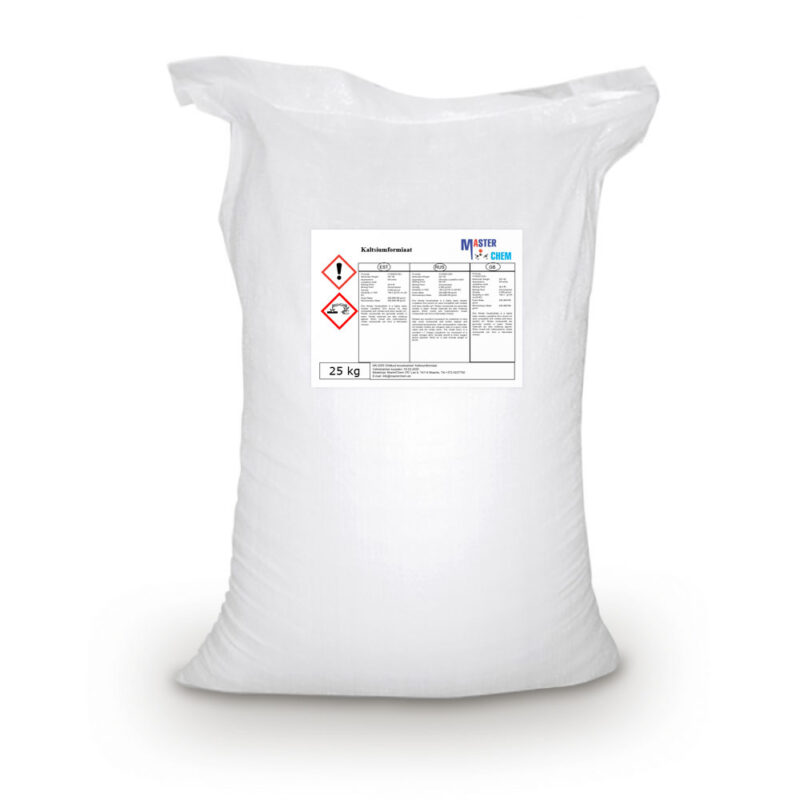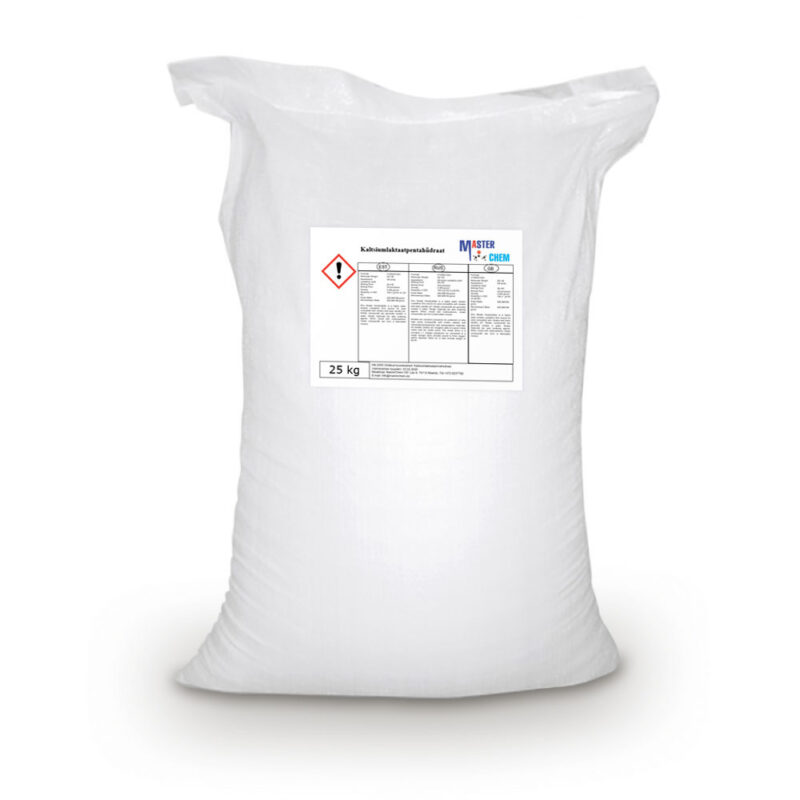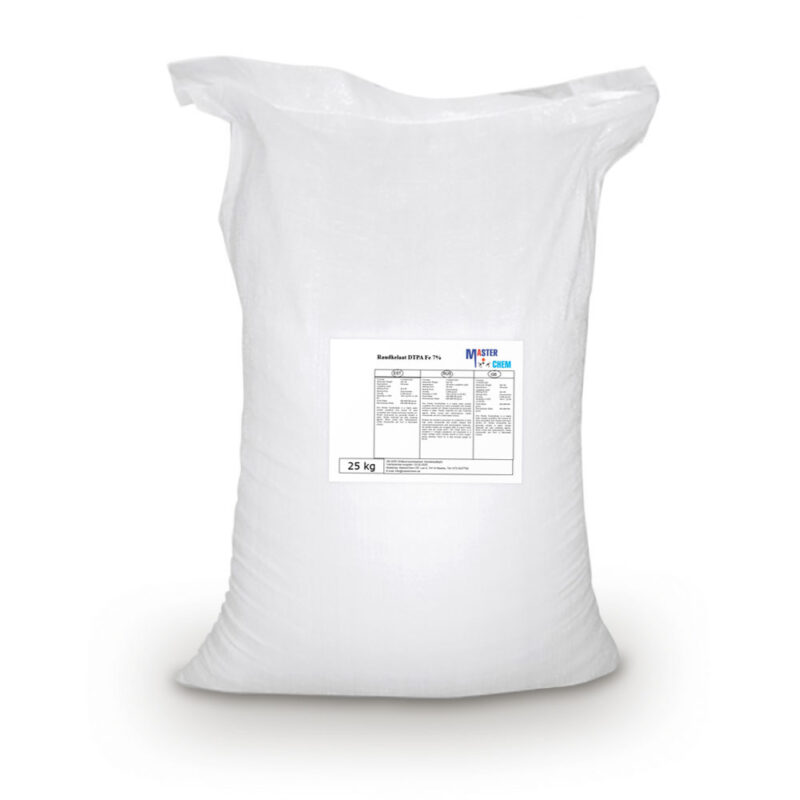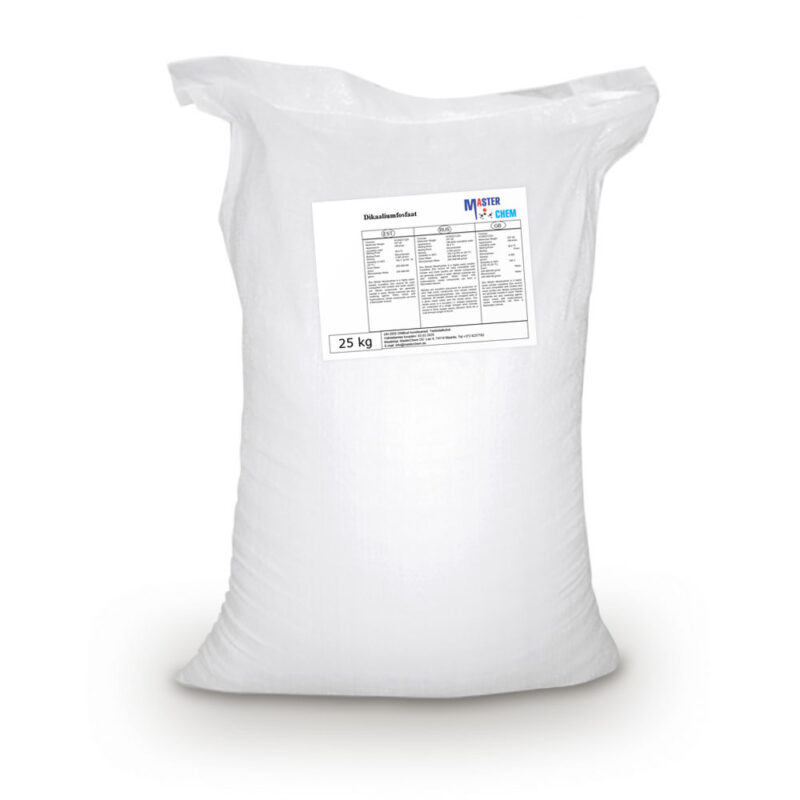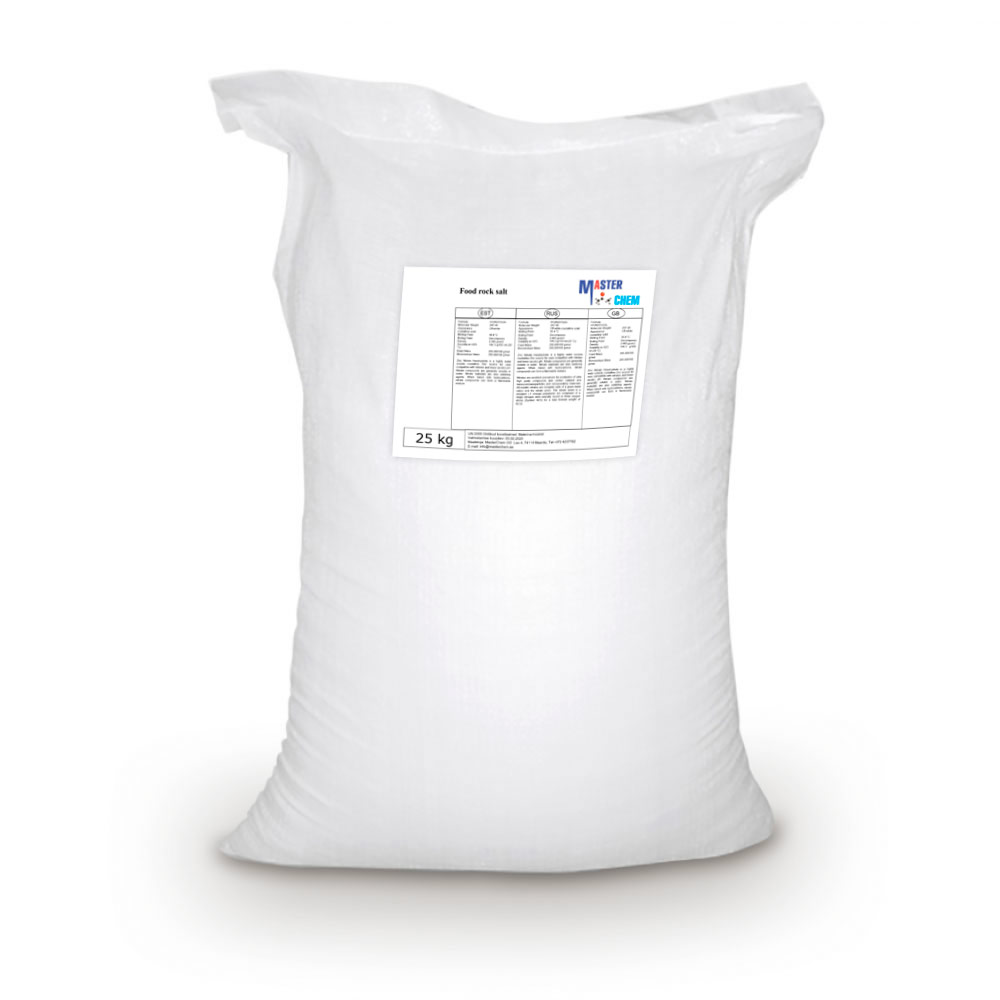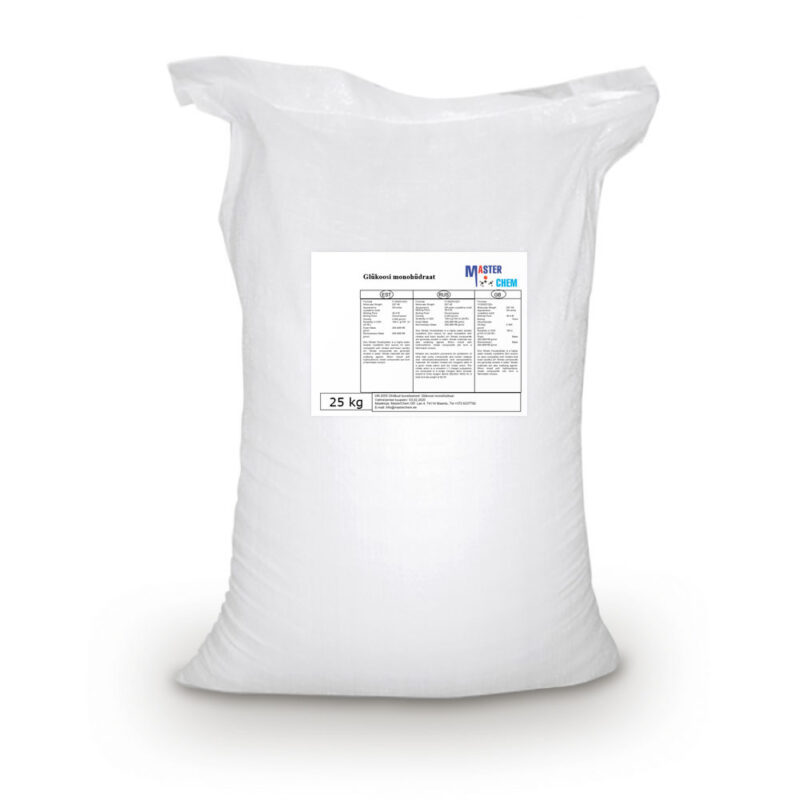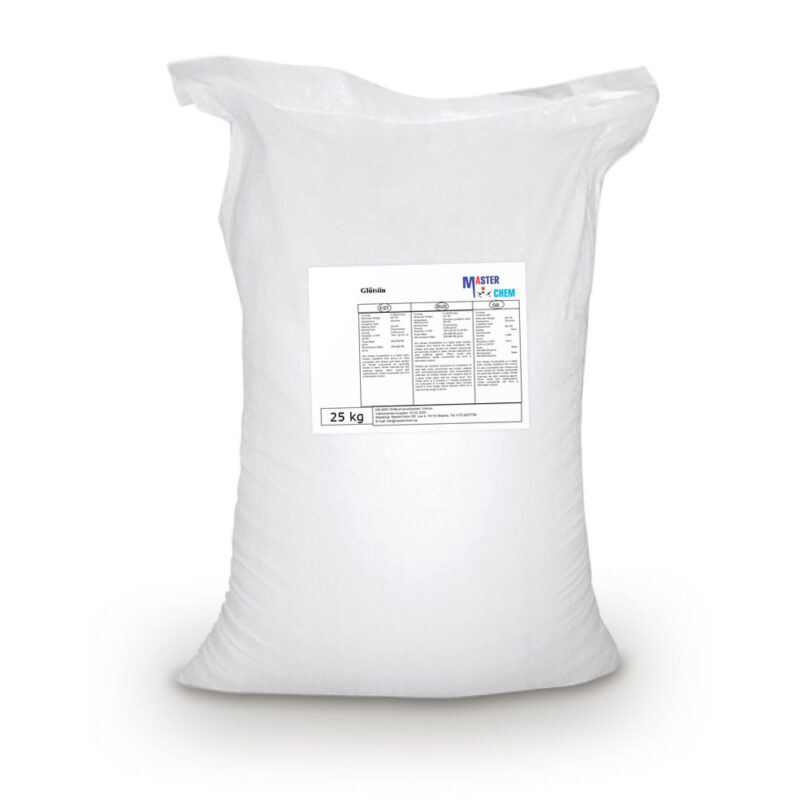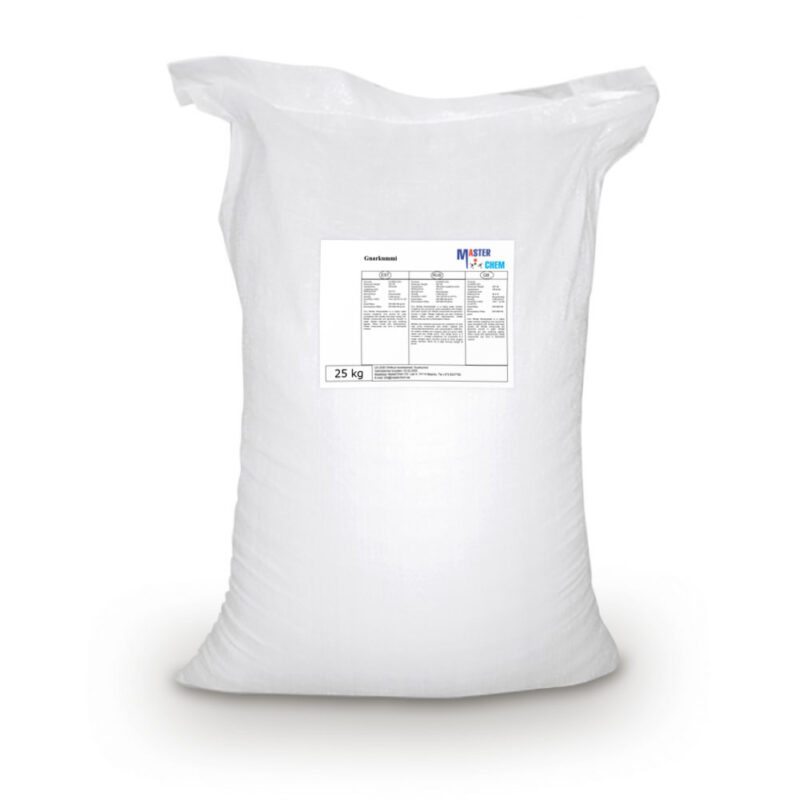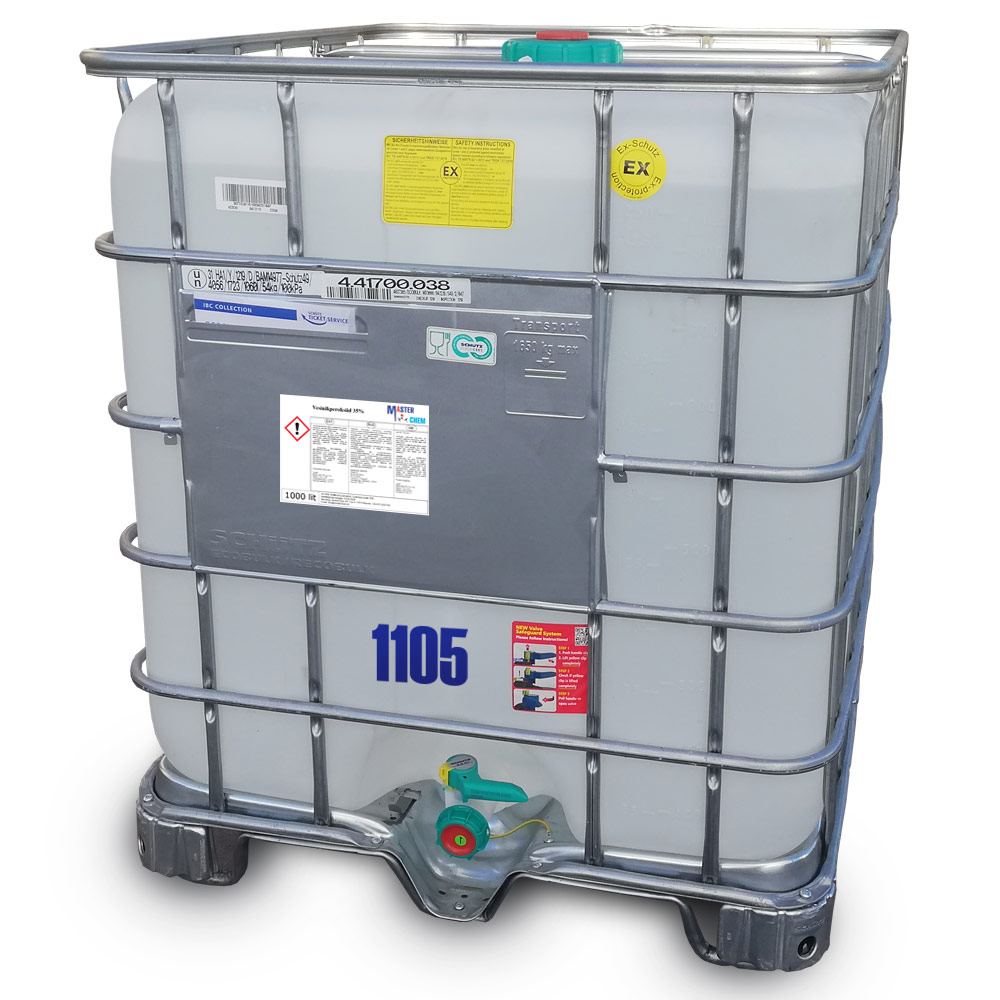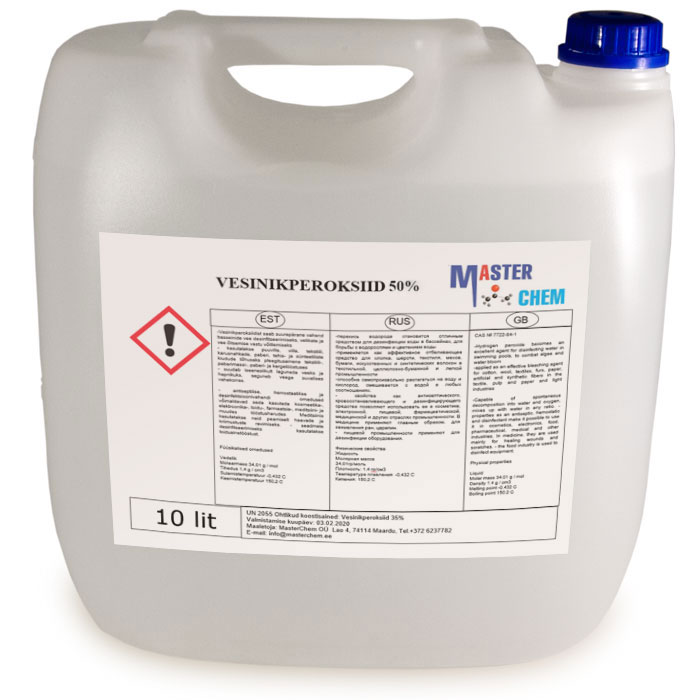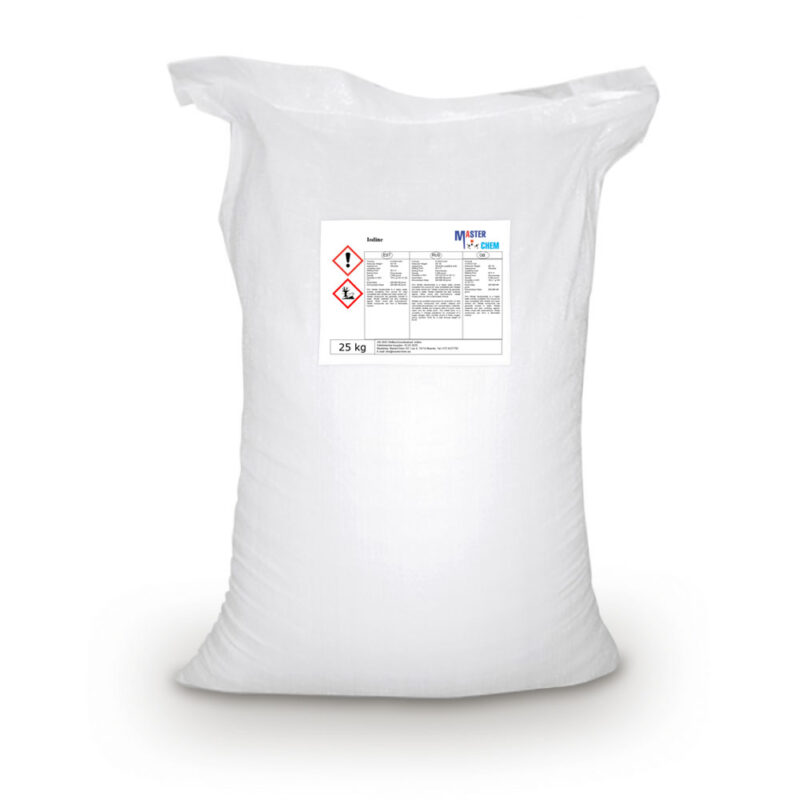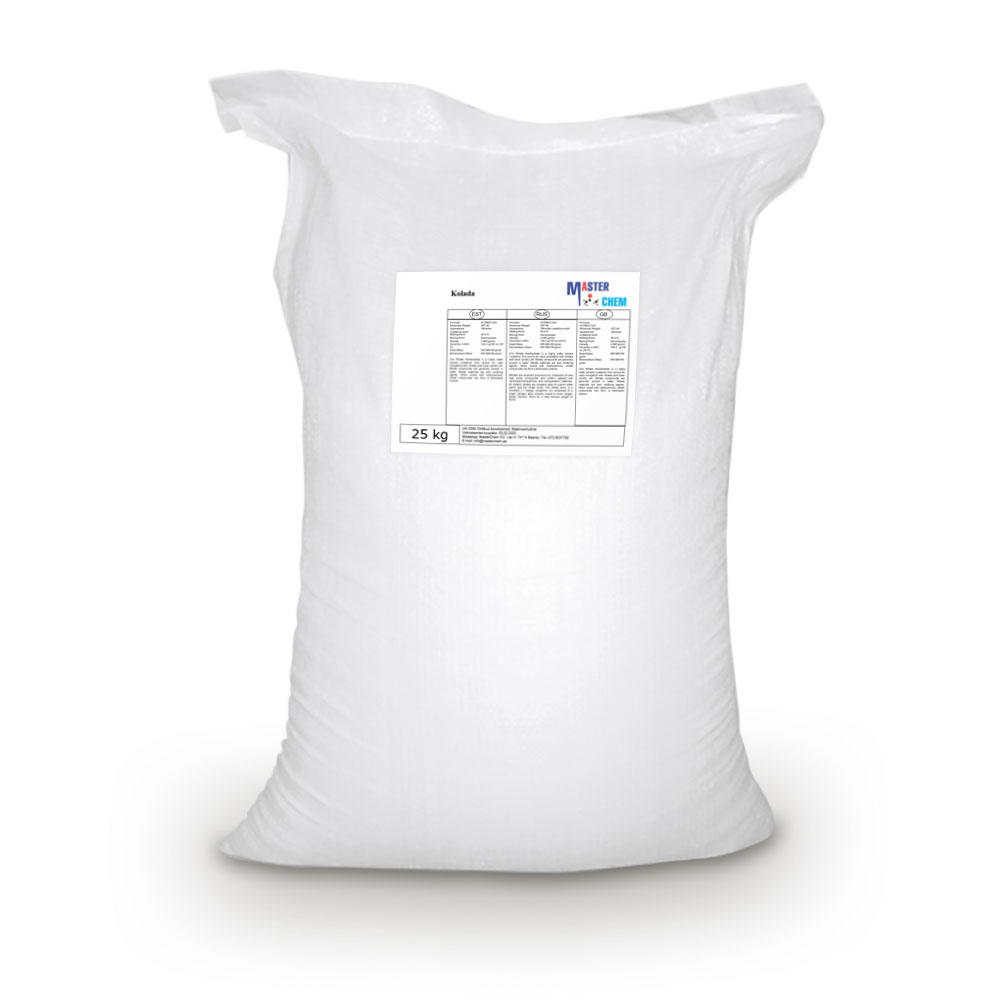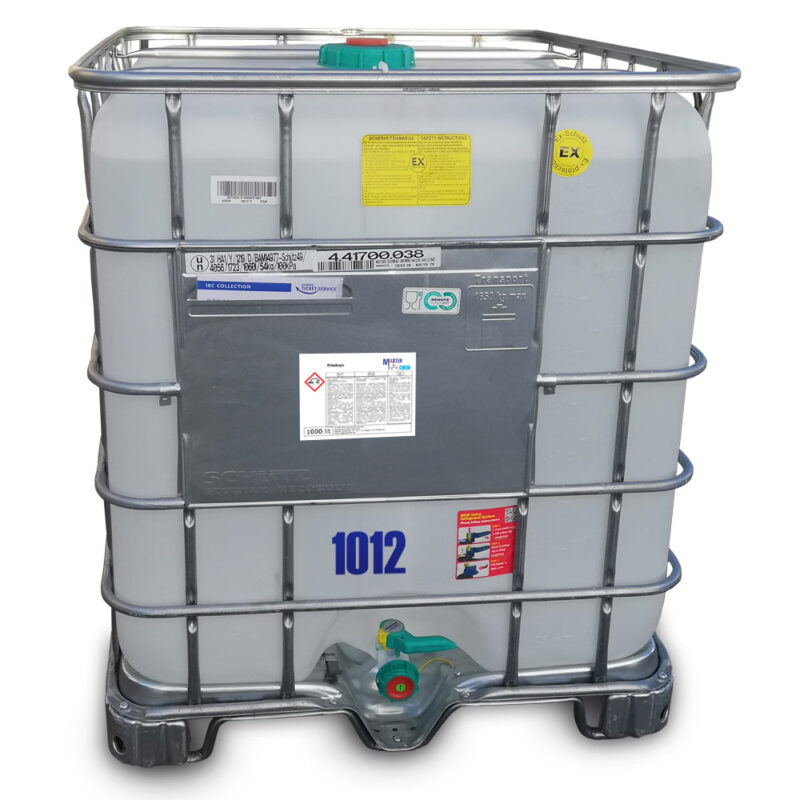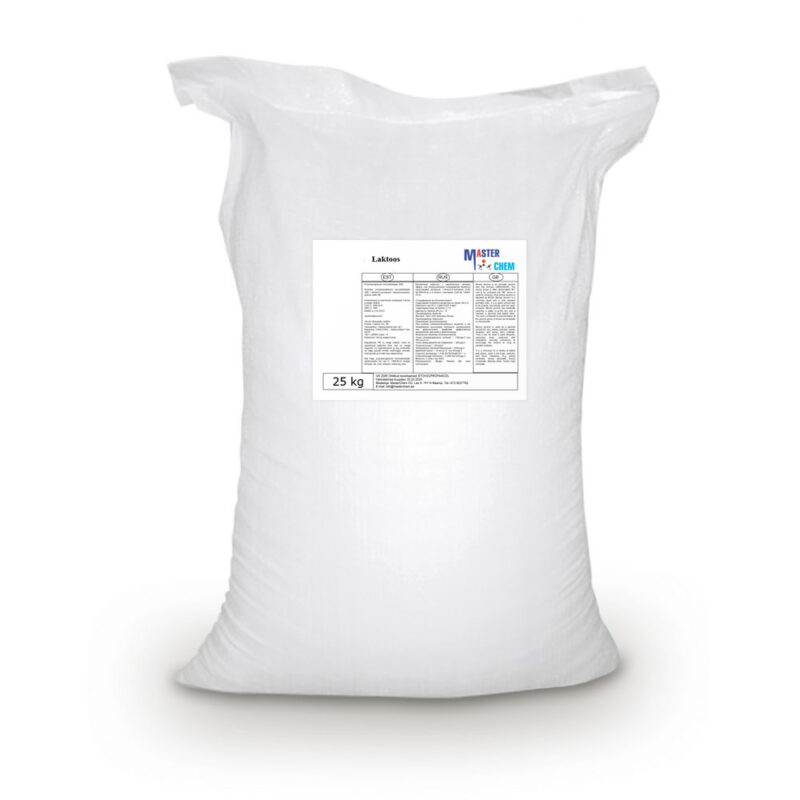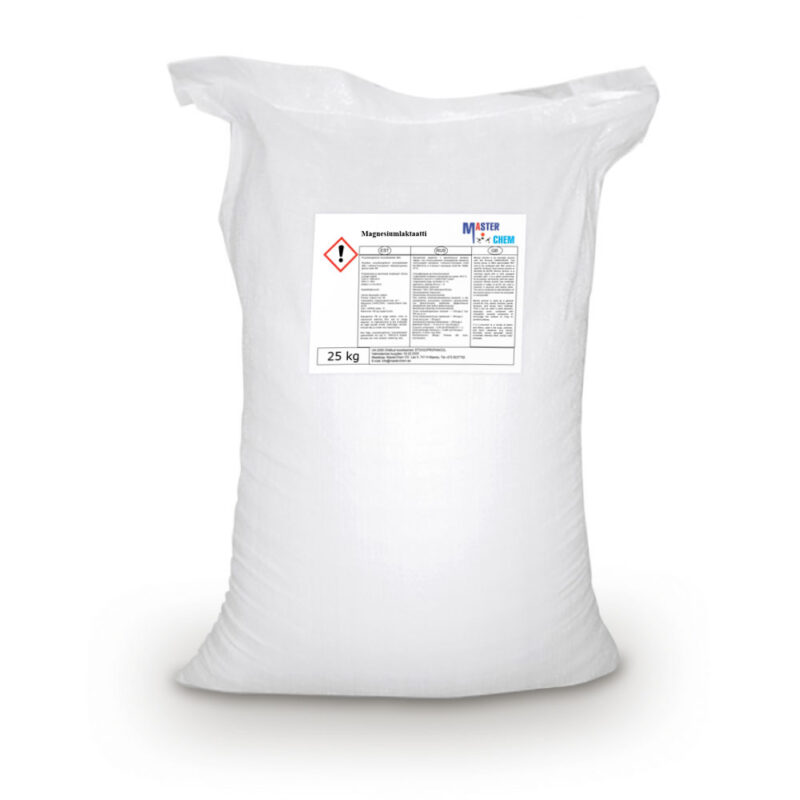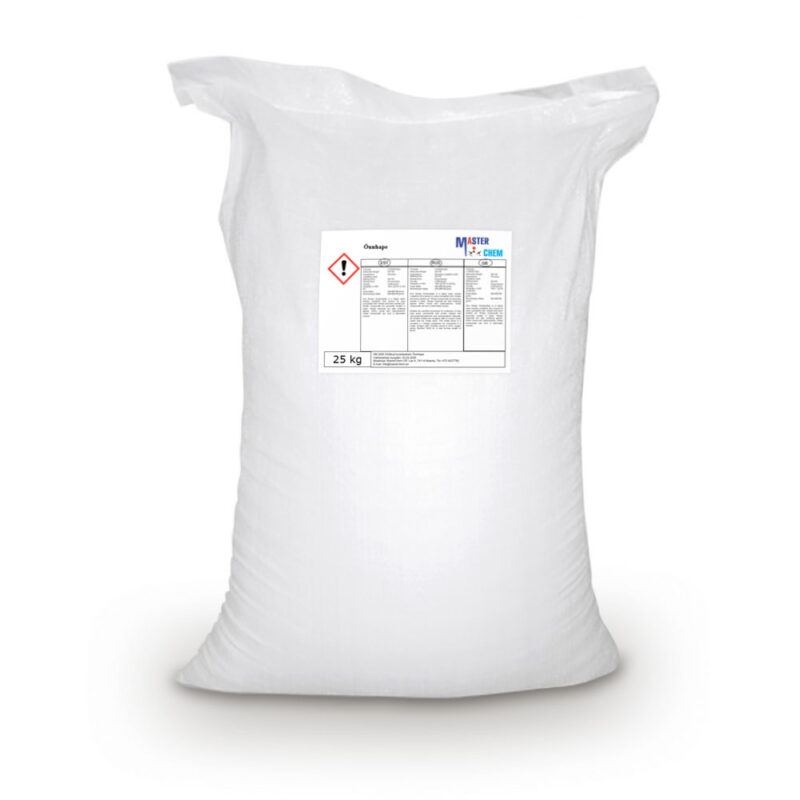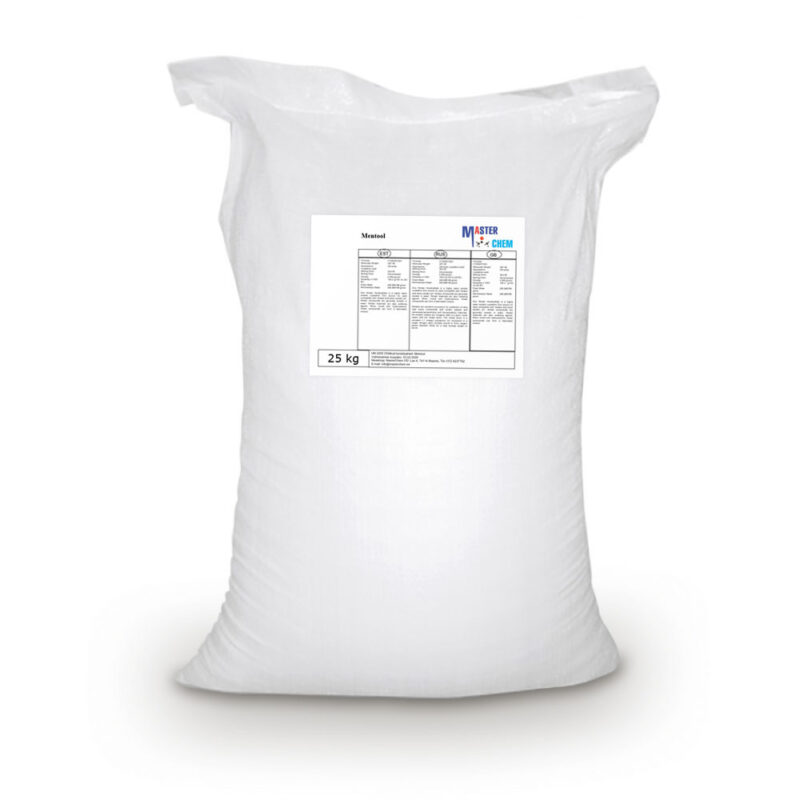Ammonium acetate (CAS 631-61-8)
Ammonium acetate (CAS 631-61-8)
Ammonium acetate, also known as spirit of Mindererus in aqueous solution, is a chemical compound with the formula NH4CH3CO2. It is a white, hygroscopic solid and can be derived from the reaction of ammonia and acetic acid. It is available commercially.
Ammonium acetate is also used as a food additive as an acidity regulator; INS number 264. It is approved for usage in Australia and New Zealand.
Ammonium hydrocarbonate (CAS 1066-33-7)
Ammonium hydrocarbonate (CAS 1066-33-7)
Ammonium bicarbonate is an inorganic compound with formula (NH4)HCO3. The compound has many names, reflecting its long history. Chemically speaking, it is the bicarbonate salt of the ammonium ion. It is a colourless solid that degrades readily to carbon dioxide, water and ammonia.
Beta alanine (CAS 107-95-9)
Beta alanine (CAS 107-95-9)
β-Alanine (or beta-alanine) is a naturally occurring beta amino acid, which is an amino acid in which the amino group is attached to the β-carbon (i.e. the carbon two atoms away from the carboxylate group) instead of the more usual α-carbon for alanine (α-alanine). The IUPAC name for β-alanine is 3-aminopropanoic acid. Unlike its counterpart α-alanine, β-alanine has no stereocenter.
Beta carotene (CAS 7235-40-7)
Beta carotene (CAS 7235-40-7)
Beta carotene is an organic, strongly coloured red-orange pigment abundant in fungi, plants, and fruits. It is a member of the carotenes, which are terpenoids (isoprenoids), synthesized biochemically from eight isoprene units and thus having 40 carbons. Among the carotenes, β-carotene is distinguished by having beta-rings at both ends of the molecule. β-Carotene is biosynthesized from geranylgeranyl pyrophosphate.
Calcium formate (CAS 544-17-2)
Calcium formate (CAS 544-17-2)
Calcium formate is the calcium salt of formic acid. It is also known as E238. Under this E number it is used as an animal feed preservative within EU, but not in foods intended for people. Calcium formate is stable at room temperature, is inflammable and forms orthorhombic crystals. The mineral form is very rare and called formicaite, and is known from a few boron deposits.
Calcium formate is used within EU as an animal feed preservative. It acidifies the feed thus preventing microbe growth and increasing shelf life. About 15 g of calcium formate addition per kg of feed lowers its pH by one. 15 g/kg is the maximum recommended feed concentration within EU – this level is thought to be safe for pigs, chickens, fish and ruminants. The compound is not environmentally harmful in feed use at these levels. Calcium formate prevents the growth bacteria such as E. coli, Pseudomonas aeruginosa, Staphylococcus aureus and Enterococcus hirae in growth mediums. It also prevents the growth of fungi like Aspergillus niger and Candida albicans. However, the relevance of these experimental observations to feed preservation is not known.
Calcium lactate pentahydrate (CAS 28305-25-1)
Calcium lactate pentahydrate (CAS 28305-25-1)
Calcium lactate is produced by mixing lactic acid with calcium carbonate or calcium hydroxide. It has high solubility and dissolving speed, high bioavailability, good taste. It’s a good source of calcium used widely in food &beverage, health products, pharmaceutical and others fields.
– Chemical name: Calcium Lactate
– Standard: Food grade FCC
– Appearance: crystalline powder
– Color: white to cream color
– Odor: almost odorless
– Solubility: Freely soluble in hot water
– Molecular formula: C6H10CaO6·5H2O
– Molecular weight: 308.3 g/mol
Calcium stearate (CAS 1592-23-0)
Calcium stearate (CAS 1592-23-0)
Calcium stearate is a carboxylate of calcium, classified as a calcium soap. It is a component of some lubricants, surfactants, as well as many foodstuffs. It is a white waxy powder.
Calcium stearate is a waxy material with low solubility in water, unlike traditional sodium and potassium soaps. It is also easy and cheap to produce, and exhibits low toxicity. These attributes are the basis of many of its applications. Related applications exist for the magnesium stearate.
Calcium stearate is used as a flow agent and surface conditioner in some candies such as Smarties, jawbreakers and Sprees. It is a waterproofing agent for fabrics. A lubricant in pencils and crayons. A lubricant in the dry drawing method of wire production
Citric acid (CAS 77-92-9)
Citric acid is a weak organic acid that has the chemical formula C6H8O7
It occurs naturally in citrus fruits. In biochemistry, it is an intermediate in the citric acid cycle, which occurs in the metabolism of all aerobic organisms.More than two million tons of citric acid are manufactured every year. It is used widely as an acidifier, as a flavoring and a chelating agent.
CAS: 77-92-9
Citric Acid Monohydrate (CAS 5949-29-1)
Citric Acid Monohydrate (CAS 5949-29-1)
Citric Acid Monohydrate is a tricarboxylic acid found in citrus fruits. Citric acid is used as an excipient in pharmaceutical preparations due to its antioxidant properties. It maintains stability of active ingredients and is used as a preservative. It is also used as an acidulant to control pH and acts as an anticoagulant by chelating calcium in blood.
Dipotassium Phosphate (CAS 7758-11-4)
Dipotassium Phosphate (CAS 7758-11-4)
Dipotassium phosphate (K2HPO4) (also dipotassium hydrogen orthophosphate; potassium phosphate dibasic) is the inorganic compound with the formula K2HPO4.(H2O)x (x = 0, 3, 6). Together with monopotassium phosphate (KH2PO4.(H2O)x), it is often used as a fertilizer, food additive, and buffering agent. It is a white or colorless solid that is soluble in water.
As a food additive, dipotassium phosphate is used in imitation dairy creamers, dry powder beverages, mineral supplements, and starter cultures. It functions as an emulsifier, stabilizer and texturizer; it also is a buffering agent, and chelating agent especially for the calcium in milk products.
As a food additive, dipotassium phosphate is categorized by the United States Food and Drug Administration as generally recognized as safe (GRAS).
Disodium pyrophosphate (CAS 7758-16-9)
Disodium pyrophosphate (CAS 7758-16-9)
Disodium pyrophosphate or sodium acid pyrophosphate (SAPP) is an inorganic compound consisting of sodium cations and pyrophosphate anion. It is a white, water-soluble solid that serves as a buffering and chelating agent, with many applications in the food industry. When crystallized from water, it forms a hexahydrate, but it dehydrates above room temperature. Pyrophosphate is a polyvalent anion with a high affinity for polyvalent cations, e.g. Ca2+.
In leather treatment, it can be used to remove iron stains on hides during processing. It can stabilize hydrogen peroxide solutions against reduction. It can be used with sulfamic acid in some dairy applications for cleaning, especially to remove soapstone. When added to scalding water, it facilitates removal of hair and scurf in hog slaughter and feathers and scurf in poultry slaughter. In petroleum production, it can be used as a dispersant in oil well drilling muds.[citation needed] It is used in cat foods as a palatability additive.[6] Disodium pyrophosphate is used as a tartar control agent in toothpastes.
Food rock salt
Tavakasutuses on sool mineraal, mis koosneb peamiselt naatriumkloriidist (NaCl). Toidus kasutamisel, eriti granuleeritud kujul, nimetatakse seda ametlikumalt lauasoolaks. Loodusliku kristallilise mineraali kujul on sool tuntud ka kivisoola või haliidina.
Glucose Monohydrate (CAS 5996-10-1)
Glucose Monohydrate (CAS 5996-10-1)
Information Industries: Pharmaceutical industry, Food industry , Feed industry CAS number: 5996-10-1 WE number: 200-075-1 Chemical formula: C6H12O6·H2O Molar mass: …
Glycine (CAS 56-40-6)
Glycine (CAS 56-40-6)
Glycine is an amino acid that has a single hydrogen atom as its side chain. It is the simplest stable amino acid (carbamic acid is unstable), with the chemical formula NH2‐CH2‐COOH. Glycine is one of the proteinogenic amino acids. It is encoded by all the codons starting with GG (GGU, GGC, GGA, GGG). Glycine is integral to the formation of alpha-helices in secondary protein structure due to its compact form. For the same reason, it is the most abundant amino acid in collagen triple-helices. Glycine is also an inhibitory neurotransmitter – interference with its release within the spinal cord (such as during a Clostridium tetani infection) can cause spastic paralysis due to uninhibited muscle contraction.
Glycine is a colorless, sweet-tasting crystalline solid. It is the only achiral proteinogenic amino acid. It can fit into hydrophilic or hydrophobic environments, due to its minimal side chain of only one hydrogen atom. The acyl radical is glycyl.
Guar gum (CAS 9000-30-0)
Guar gum (CAS 9000-30-0)
Guar gum, also called guaran, is a galactomannan polysaccharide extracted from guar beans that has thickening and stabilizing properties useful in food, feed, and industrial applications. The guar seeds are mechanically dehusked, hydrated, milled and screened according to application. It is typically produced as a free-flowing, off-white powder.
The guar bean is principally grown in India, Pakistan, U.S., Australia and Africa. India produces about 2.5 – 3 million tons of guar annually, making it the largest producer, with about 65% of world production. In India, Rajasthan, Gujarat and Haryana are the main producing regions, and Jodhpur, Sri Ganganagar and Hanumangarh in Rajasthan and Pakistan with Second largest producer with 25% of Guar gum Produce In Pakistan is major Guar trading market. The US has produced 4,600 to 14,000 tonnes of guar over the last 5 years. Texas acreage since 1999 has fluctuated from about 7,000 to 50,000 acres. The world production for guar gum and its derivatives is about 1.0 Million tonnes. Non-food guar gum accounts for about 40% of the total demand.
Hydrogen peroxide 50% (CAS 7722-84-1)
CAS № 7722-84-1
Hydrogen peroxide 50%
– colorless liquid with a metallic taste, easily soluble in water, alcohol and ether
Application
-Hydrogen peroxide becomes an excellent agent for disinfecting water in swimming pools, to combat algae and water bloom
-applied as an effective bleaching agent for cotton, wool, textiles, furs, paper, artificial and synthetic fibers in the textile, pulp and paper and light industries
-Capable of spontaneous decomposition into water and oxygen, mixes up with water in any ratio. – properties as an antiseptic, hemostatic and disinfectant make it possible to use it in cosmetics, electronics, food, pharmaceutical, medical and other industries. In medicine, they are used mainly for healing wounds and scratches. – the food industry is used to disinfect equipment.
Iodine (CAS 7553-56-2)
Iodine (CAS 7553-56-2)
Iodine is a chemical element with the symbol I and atomic number 53. The heaviest of the stable halogens, it exists as a semi-lustrous, non-metallic solid at standard conditions that melts to form a deep violet liquid at 114 degrees Celsius, and boils to a violet gas at 184 degrees Celsius. The element was discovered by the French chemist Bernard Courtois in 1811, and was named two years later by Joseph Louis Gay-Lussac, after the Greek ἰώδης “violet-coloured”.
Iodine occurs in many oxidation states, including iodide (I−), iodate (IO−
3), and the various periodate anions. It is the least abundant of the stable halogens, being the sixty-first most abundant element. It is the heaviest essential mineral nutrient. Iodine is essential in the synthesis of thyroid hormones. Iodine deficiency affects about two billion people and is the leading preventable cause of intellectual disabilities.
The dominant producers of iodine today are Chile and Japan. Iodine and its compounds are primarily used in nutrition. Due to its high atomic number and ease of attachment to organic compounds, it has also found favour as a non-toxic radiocontrast material. Because of the specificity of its uptake by the human body, radioactive isotopes of iodine can also be used to treat thyroid cancer. Iodine is also used as a catalyst in the industrial production of acetic acid and some polymers.
Kolada (CAS 39711-79-0)
Kolada (CAS 39711-79-0)
The traditional coolants like menthol, peppermint oil and eucalyptus oil have the advantages of fast eruption and strong stimulation of cool feeling. But meanwhile they have the disadvantages of very strong characteristic smell, which is easy to volatilize at high temperature and contains bitter taste at high dosages.
Application
1. Daily use products: Toothpaste, oral products, Air Freshener, skin cream, shaving cream, shampoo, sunscreen, shower cream.
2. Foods: Confectionery products, chocolate, dairy produce, beer, distilled spirit, beverage, Chewing Gum.
3. Medicines: Linctus, diminish inflammation ointment, dyspepsia, antipruritic, liniment, oral cavity acesodyne, heatstroke pill.
L-Ascorbic Acid (CAS 50-81-7)
L-Ascorbic Acid (CAS 50-81-7)
Vitamin C (also known as ascorbic acid and ascorbate) is a vitamin found in various foods and sold as a dietary supplement. It is used to prevent and treat scurvy. Vitamin C is an essential nutrient involved in the repair of tissue, the formation of collagen, and the enzymatic production of certain neurotransmitters. It is required for the functioning of several enzymes and is important for immune system function. It also functions as an antioxidant. Most animals are able to synthesize their own vitamin C, although apes (including humans) and monkeys (but not all primates), most bats, some rodents, and certain other animals must acquire it from dietary sources.
Lactic acid 50% (CAS 598-82-3)
Lactic acid 50% (CAS 598-82-3)
Lactic acid is an organic acid. It has a molecular formula CH3CH(OH)COOH. It is white in the solid state and it is miscible with water. When in the dissolved state, it forms a colorless solution. Production includes both artificial synthesis as well as natural sources. Lactic acid is an alpha-hydroxy acid (AHA) due to the presence of a hydroxyl group adjacent to the carboxyl group. It is used as a synthetic intermediate in many organic synthesis industries and in various biochemical industries. The conjugate base of lactic acid is called lactate.
In solution, it can ionize by loss of a proton to produce the lactate ion CH3CH(OH)CO−2. Compared to acetic acid, its pKa is 1 unit less, meaning lactic acid is ten times more acidic than acetic acid. This higher acidity is the consequence of the intramolecular hydrogen bonding between the α-hydroxyl and the carboxylate group.
Lactose (CAS 63-42-3)
Lactose (CAS 63-42-3)
Lactose, a disaccharide, is a sugar composed of galactose and glucose subunits and has the molecular formula C12H22O11. Lactose makes up around 2–8% of milk (by weight). The name comes from lac (gen. lactis), the Latin word for milk, plus the suffix -ose used to name sugars. The compound is a white, water-soluble, non-hygroscopic solid with a mildly sweet taste. It is used in the food industry.
Its mild flavor and easy handling properties have led to its use as a carrier and stabiliser of aromas and pharmaceutical products. Lactose is not added directly to many foods, because its solubility is less than that of other sugars commonly used in food. Infant formula is a notable exception, where the addition of lactose is necessary to match the composition of human milk.
Lactose is not fermented by most yeast during brewing, which may be used to advantage. For example, lactose may be used to sweeten stout beer; the resulting beer is usually called a milk stout or a cream stout.
Yeast belonging to the genus Kluyveromyces have a unique industrial application as they are capable of fermenting lactose for ethanol production. Surplus lactose from the whey by-product of dairy operations is a potential source of alternative energy.
Magnesium lactate (CAS 18917-93-6)
Magnesium lactate (CAS 18917-93-6)
Magnesium lactate, the magnesium salt of lactic acid, is a mineral supplement. Added to some food and beverages as an acidity regulator and labeled as E329.
Malic acid (CAS 6915-15-7)
Malic acid (CAS 6915-15-7)
Malic acid is an organic compound with the molecular formula C4H6O5. It is a dicarboxylic acid that is made by all living organisms, contributes to the sour taste of fruits, and is used as a food additive. Malic acid has two stereoisomeric forms (L- and D-enantiomers), though only the L-isomer exists naturally. The salts and esters of malic acid are known as malates. The malate anion is an intermediate in the citric acid cycle.
Menthol (CAS 2216-51-5)
Menthol (CAS 2216-51-5)
Menthol (CAS 2216-51-5)
Menthol is an organic compound, more specifically a monoterpenoid, made synthetically or obtained from the oils of corn mint, peppermint, or other mints. It is a waxy, crystalline substance, clear or white in color, which is solid at room temperature and melts slightly above.
The main form of menthol occurring in nature is (−)-menthol, which is assigned the (1R,2S,5R) configuration. Menthol has local anesthetic and counterirritant qualities, and it is widely used to relieve minor throat irritation. Menthol also acts as a weak κ-opioid receptor agonist.

